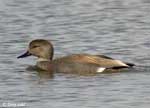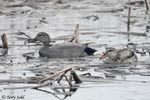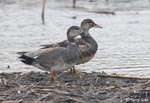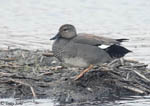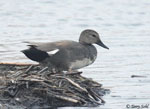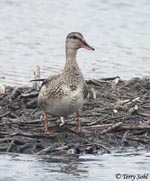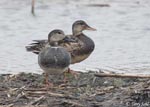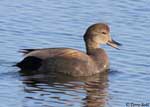| Length: 18 to 22 inches | Wingspan: 30 to 36 inches | Seasonality: Summer |
| ID Keys: Generally plain. Males grayish with black tail coverts, white wing patch. | ||
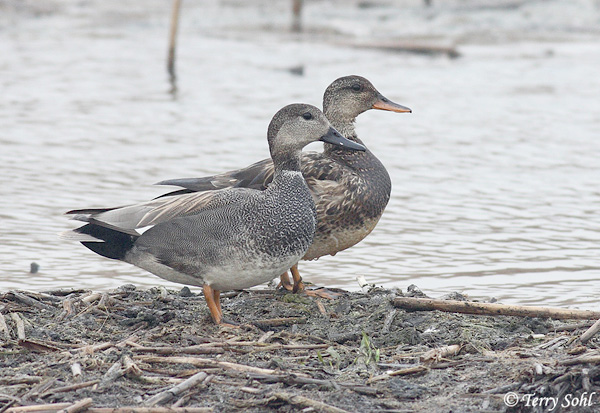 While a fairly common summer resident in South Dakota, the
Gadwall is often overlooked due to its rather plain plumage. Even the male
has a relatively drab plumage compared to most male
dabbling ducks, in terms of color, but the plumage patterns on a gadwall are
quite beautiful if seen well. Gadwalls can also be found throughout Europe and Asia.
While a fairly common summer resident in South Dakota, the
Gadwall is often overlooked due to its rather plain plumage. Even the male
has a relatively drab plumage compared to most male
dabbling ducks, in terms of color, but the plumage patterns on a gadwall are
quite beautiful if seen well. Gadwalls can also be found throughout Europe and Asia.
Habitat: Prefers lakes and wetlands in open prairie areas, and can also be found in coastal marshlands.
Diet: Primarily feeds on aquatic plants. They will also feed on crustaceans, mollusks, insects and insect larvae, and occasionally small fish.
Behavior: Very rarely forages on land, nearly always forages on the water. Primarily acts like a dabbling duck, grabbing items from the water's surface or by upending and submerging it's head underwater. They are also capable of diving underwater in search of food.
Nesting: May through July
Song: Whiny meeep calls from the male. Typical quacking from female.
Migration: Summers throughout much of the Northern Plains and parts of the (lower-elevation) West. Winters along U.S. coastlines, the southern half of the U.S., and Mexico. Some birds in the Western and Southern U.S. may be permanent residents.
Interactive eBird Map: Click here to access an interactive eBird map of Gadwall sightings
Similar Species: Mallard
Conservation Status: Its normal breeding range in the Northern Plains is smaller than that of many other ducks, and thus it was probably affected more by human settlement and alteration of the region than were many other species. Current populations are probably stable, however.
Further Information: 1) Patuxent Bird Identification InfoCenter, Gadwall
Photo Information: April 1st, 2012 - Dewey Gevik Nature Area near Sioux Falls, South Dakota - Terry Sohl
Additional Photos: Click on the image chips or text links below for additional, higher-resolution Gadwall photos.
| Click on the range map for a higher-resolution view |
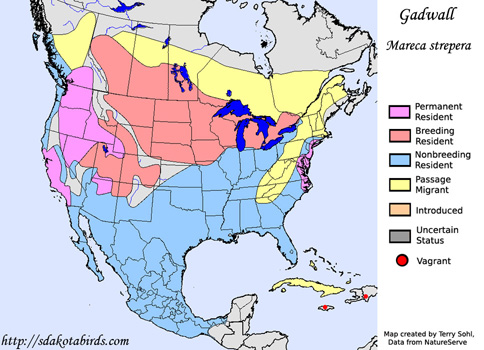 |
| South Dakota Status: Common migrant and summer resident throughout most of the state. Uncommon in winter. |
Additional Gadwall Photos
Click for a higher-resolution version of these photos
